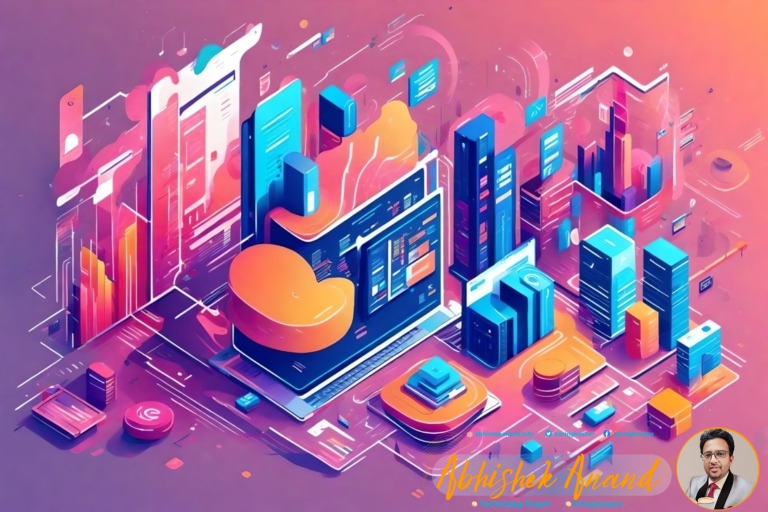Software as a Service (SaaS) has revolutionized the software industry by offering a new way of delivering software applications. This model allows users to access software applications through the internet without having to install or maintain them on their own devices. SaaS has become increasingly popular in recent years, with global revenue expected to reach $141 billion by 2022. However, while gaining new customers is important for SaaS providers, retaining existing ones and increasing revenue from them is equally crucial.
This article will explore the impact of SaaS renewals and upselling on revenue growth. It will begin by defining SaaS and discussing its importance in customer retention. The article will then delve into the concept of SaaS renewals, explaining how they work and why they are important for driving revenue growth. The role of upselling in maximizing revenue potential will also be discussed, along with best practices for measuring success and ROI. Finally, this article will examine some common challenges and pitfalls associated with SaaS renewals and upselling through real-world case studies.
Definition of SaaS
SaaS, an acronym for Software-as-a-Service, refers to a software delivery model where applications are hosted by a third-party provider and accessed online via the internet. Unlike traditional software distribution methods that require installation on individual devices, SaaS operates through a subscription-based service that allows users to access the software from any location with internet connectivity. This cloud-based approach enables companies to offer scalable solutions that can be easily customized based on user needs.
One of the key features of SaaS is its flexibility, allowing businesses to pay only for what they use while avoiding costs associated with maintaining an in-house IT infrastructure. This model also offers many advantages over traditional software models such as automatic updates and maintenance, improved data security, and reduced downtime due to hardware or software failures. Additionally, SaaS providers often offer comprehensive support services that ensure customers get the most out of their investment.
As businesses continue to embrace digital transformation, SaaS has become an increasingly important tool for driving growth and improving operations. With its cost-effectiveness and scalability advantages coupled with enhanced functionality and ease of use, SaaS has enabled companies of all sizes across various industries to stay competitive in today’s fast-paced market. Given these benefits, it is no surprise that many companies are turning towards SaaS solutions as part of their long-term growth strategies. In light of this trend towards digitalization fuelled by advancements in technology adoption rates across all sectors worldwide – including education institutions -, it is essential for organizations to focus on customer retention strategies as a way of sustaining revenue growth over time.

Importance of Customer Retention
Customer retention is a critical component in maintaining an ongoing, profitable business relationship with clients. It is more cost-effective to retain existing customers than to acquire new ones, as it costs five times as much to attract a new customer than it does to keep an existing one. Therefore, businesses must prioritize their efforts towards retaining customers and building customer loyalty.
To achieve this goal, companies can employ various retention strategies such as providing excellent customer service, offering personalized experiences, and implementing loyalty programs. Excellent customer service involves responding promptly to queries and complaints and providing solutions that meet the client’s needs. Personalized experiences can be created by tailoring products or services to suit individual needs or preferences. Loyalty programs offer rewards for repeat purchases or referrals, making customers feel valued and appreciated.
By implementing these retention strategies, businesses can build long-term relationships with their clients based on trust and satisfaction. Consequently, they will benefit from increased revenue growth through upselling opportunities and SaaS renewals. In the subsequent section about understanding SaaS renewals, we will explore how companies can leverage these strategies to maximize revenue growth even further.
Customer retention is essential for businesses seeking sustainable growth through revenue generation opportunities such as upselling and SaaS renewals. By prioritizing customer loyalty and employing relevant retention strategies such as excellent customer service provision, personalization of experiences, and loyalty programs implementation businesses can create long-lasting relationships with their clients resulting in increased profits over time.

Understanding SaaS Renewals
This discussion on Understanding SaaS Renewals will focus on three key areas: Identifying the Key Metrics, Strategies for Improving Renewal Rates, and Best Practices for Managing Renewals. To ensure a successful renewal process, it is essential to identify the critical metrics that measure customer satisfaction and engagement. By implementing effective strategies such as proactive communication, personalized offers, and value-based pricing models, businesses can boost their renewal rates and increase revenue growth. Finally, managing renewals requires a structured approach that includes regular monitoring of customer behavior and addressing any issues promptly to maintain high retention rates.
Identifying the Key Metrics
By analyzing various retention metrics and performing churn analysis, it is possible to identify the key drivers that impact the growth of SaaS renewals and upselling. These metrics allow organizations to track customer behavior throughout their lifecycle and identify potential areas for improvement. Retention metrics such as revenue per customer, customer lifetime value (CLV), and renewal rates provide insight into how well an organization is retaining its customers.
Churn analysis, on the other hand, helps organizations understand why customers are leaving and what can be done to prevent it. By tracking churn rates over time, organizations can see which products or features are causing customers to leave and adjust accordingly. This data-driven approach allows organizations to make strategic decisions about how to improve their SaaS renewals and upselling efforts in order to drive revenue growth. In the subsequent section about strategies for improving renewal rates, we will explore some of these approaches in more detail.
Strategies for Improving Renewal Rates
Implementing effective strategies for improving renewal rates is vital for long-term success in the SaaS industry. One such strategy is using renewal reminders to prompt customers to renew their subscriptions before they expire. Renewal reminders can be sent via email or other communication channels, and should include personalized messages that highlight the value of the product and any new features or updates. In addition, it’s important to make the renewal process as simple and streamlined as possible by providing clear instructions and an easy-to-use interface.
Another key strategy for improving renewal rates is gathering customer feedback throughout their subscription period. This can be done through surveys, focus groups, or even one-on-one conversations with account managers. By understanding what customers like (or don’t like) about the product, companies can address any issues before they become deal-breakers and improve overall customer satisfaction. Additionally, incorporating customer feedback into product development and marketing efforts can increase retention rates by demonstrating that the company values its customers’ opinions and is actively working to meet their needs.
Transition: By implementing these strategies for improving renewal rates – such as using renewal reminders and gathering customer feedback – SaaS companies can maximize revenue growth while also increasing customer loyalty. However, there are also best practices for managing renewals that should be considered to ensure continued success in this area.
Best Practices for Managing Renewals
As savvy SaaS companies know, effective management of subscription renewals requires adherence to a set of best practices that help optimize retention rates and maintain customer loyalty. One such best practice is the use of renewal automation tools that can streamline the entire renewal process. These tools enable companies to automate reminders and notifications about upcoming renewals, as well as offer easy payment options to customers. By automating these tasks, companies can reduce the risk of human error and ensure that customers are always aware of their upcoming renewals.
Another critical factor in managing SaaS renewals is customer engagement. Companies should strive to keep their customers engaged throughout the subscription period by offering them regular updates on new product features or enhancements, providing excellent support services, and soliciting feedback from them regularly. Strong customer engagement has been shown to be an essential driver of retention rates in SaaS businesses, so it’s vital for companies to leverage different channels like email marketing campaigns, social media platforms or webinars to increase interaction with clients. Overall, by implementing strong renewal automation processes combined with maintaining high levels of customer engagement will undoubtedly help improve retention rates which leads us into discussing how upselling plays a crucial role in SaaS revenue growth.
The Role of Upselling in SaaS
Upselling strategies can play a crucial role in generating revenue growth for SaaS companies by encouraging existing customers to upgrade their subscription plans or purchase additional features. Upselling techniques involve understanding customer psychology and offering personalized recommendations based on their usage patterns, preferences, and pain points. By upselling to existing customers, SaaS companies can not only increase their revenue but also improve customer retention rates.
One of the key benefits of upselling is that it allows SaaS companies to maximize the value of each customer relationship. When done correctly, upselling can enhance the overall customer experience by providing them with more tailored solutions that better meet their needs. Furthermore, it enables SaaS companies to maintain a competitive edge by staying up-to-date with evolving market trends and technology advancements.
To maximize revenue potential, SaaS companies must adopt a strategic approach towards upselling and focus on delivering measurable business outcomes rather than just selling more products or services. This involves analyzing data on customer behavior and identifying patterns that indicate opportunities for upsells. By leveraging this data intelligently, SaaS companies can offer targeted recommendations that are relevant and valuable to each individual user, ultimately leading to increased revenue growth over time.

Maximizing Revenue Potential
To optimize their financial potential, SaaS companies must focus on understanding customer behavior and developing targeted recommendations that align with each user’s specific needs. Revenue optimization is critical to the success of any business, and pricing strategies play a crucial role in achieving this goal. Here are three items to keep in mind when maximizing revenue potential:
Offer personalized pricing: Customers are more likely to purchase products or services if they feel like they are getting a good deal. By offering personalized pricing options based on usage rates or other metrics, SaaS companies can increase the likelihood of renewals and upsells.
Focus on value-based selling: Instead of simply pushing features and benefits, SaaS companies should focus on demonstrating how their product adds value to the customer’s business. This approach helps customers see the real impact of using the software, making it easier for them to justify renewals and upgrades.
Utilize data analytics: Data analytics provides valuable insights into customer behavior patterns, which can be used to develop targeted recommendations for renewals and upsells. By analyzing usage data, subscription history, and other key metrics, SaaS companies can identify opportunities for growth and tailor their offerings accordingly.
Incorporating these strategies into a comprehensive revenue optimization plan can help SaaS companies maximize their financial potential. In the next section, we will explore how data analytics can be used to further drive renewals and upselling efforts.
Using Data Analytics to Drive Renewals and Upselling
Maximizing revenue potential has always been a top priority for businesses, and one way to achieve this is through renewals and upselling. However, simply offering these options is not enough; companies must use data analytics to ensure success. By utilizing predictive modeling, they can analyze customer behavior and determine the likelihood of renewal or upsell. Additionally, customer segmentation allows for targeted marketing efforts that cater to each group’s unique needs.
Predictive modeling involves using statistical algorithms to predict future outcomes based on historical data patterns. This approach helps businesses identify which customers are most likely to renew their subscriptions or purchase additional products/services. By doing so, companies can create targeted campaigns that focus on retaining those customers who show the highest probability of churn while also identifying opportunities for upselling.
Customer segmentation is another critical component in driving renewals and upselling. It involves dividing customers into distinct groups based on shared characteristics such as demographics, behavior patterns, or purchasing history. This process allows companies to tailor their marketing efforts towards each segment’s specific needs and preferences while creating personalized experiences that drive engagement and loyalty.
Data analytics play a significant role in driving revenue growth through renewals and upselling by leveraging predictive modeling and customer segmentation techniques. These approaches enable businesses to identify key trends in customer behavior, anticipate future outcomes accurately, and personalize marketing campaigns accordingly. The next step is personalizing the customer experience further by incorporating individualized recommendations based on past purchases or browsing history without sacrificing privacy concerns or relying solely on cookie tracking methods.

Personalizing the Customer Experience
Personalizing the customer experience is a crucial aspect of modern-day business operations, as it can significantly enhance customer satisfaction and foster long-term loyalty towards the brand. One way to achieve this personalization is through personalized recommendations. These recommendations are based on data analytics that analyze customers’ previous purchases, preferences, and behavior to suggest products or services tailored to their needs. This approach helps build a stronger relationship between the customer and the brand while simultaneously increasing the likelihood of making successful upsells.
Another way to personalize the customer experience is by enhancing customer engagement. Customers expect businesses to understand their needs and provide them with an excellent service experience. Therefore, engaging with customers through various channels such as social media, email marketing campaigns, or live chat support can help establish trust and improve overall satisfaction levels. By doing so, companies can create a more positive perception of their brand in customers’ minds leading to increased revenue growth.
Personalizing the customer experience is a crucial factor in driving renewals and upselling efforts for modern-day businesses. Personalized recommendations based on data analytics and enhanced customer engagement through various channels can significantly increase customer satisfaction levels leading to long-term loyalty towards the brand. The role of sales and marketing in renewals and upselling will be further explored in subsequent sections.
The Role of Sales and Marketing in Renewals and Upselling
Sales and marketing strategies play a crucial role in enhancing customer experience and fostering long-term loyalty towards the brand. It is imperative for businesses to align their sales and marketing efforts to ensure that customers are provided with an exceptional experience throughout their journey with the company. This collaboration between sales and marketing teams can help identify new opportunities for upselling and renewals, which ultimately contribute to revenue growth.
To effectively drive renewals and upselling, companies must implement a customer segmentation strategy. By segmenting customers based on their behavior, preferences, demographics, or other relevant criteria, businesses can tailor their offerings to meet specific needs of each group. This approach not only increases retention rates but also improves the overall customer experience by providing personalized solutions that meet individual requirements.
Moreover, sales and marketing teams should focus on building strong relationships with customers. By providing consistent value through customized communication channels such as email campaigns or social media outreach programs, businesses can create loyal customers who are more likely to renew contracts or purchase additional products/services from them in the future. Such efforts also generate positive word-of-mouth referrals which helps attract new potential customers.
Effective collaboration between sales and marketing teams is critical in driving revenue growth through renewals and upselling. A well-planned customer segmentation strategy combined with personalized communication channels can help build strong relationships with customers that foster loyalty towards the brand. The subsequent section will delve deeper into how companies can build robust customer relationships that enhance brand reputation while ensuring repeat business from existing clients.
Building Strong Customer Relationships
Building strong customer relationships is essential for businesses to establish trust and reliability with their clients. This can result in a loyal and satisfied customer base that acts as advocates for the brand. Companies can achieve this by engaging customers through various channels such as social media, email marketing, and personalized content.
One effective way to build customer engagement is through loyalty programs. These programs incentivize customers to continue purchasing from the company by offering rewards or exclusive perks. A well-designed loyalty program not only strengthens the relationship between the business and its customers but also increases the average order value and frequency of purchases.
By focusing on building strong customer relationships and implementing effective loyalty programs, businesses can increase renewal rates and upsell opportunities. This translates to higher revenue growth over time, as customers are more likely to continue using a company’s services or products when they feel valued and appreciated. However, it is equally important for companies to continue innovating their products in order to stay relevant in an ever-changing market.
Transition Sentence: Next, we will explore how product innovation plays a crucial role in driving revenue growth for SaaS companies.
The Importance of Product Innovation
In today’s ever-evolving market, product development and innovation are critical components of a successful business strategy. Companies that fail to innovate their products risk falling behind their competitors and losing relevance in the eyes of consumers. Innovation is necessary not only to keep up with changing consumer preferences but also to differentiate oneself from competitors in the market.
Product development is an ongoing process that involves identifying new opportunities, creating ideas, testing those ideas, and launching new products or services. In order to remain competitive, companies must be committed to investing resources into research and development for continuous improvement of existing products and the creation of new ones. This investment in innovation can help businesses stay ahead of industry trends while also providing unique value propositions that set them apart from their competitors.
Market differentiation is another key aspect of product innovation. By identifying gaps in the market or unmet customer needs, companies can create offerings that solve problems or cater to specific segments of customers. This not only helps attract new customers but can also increase loyalty among existing ones who feel understood by the brand. Ultimately, effective product innovation can drive revenue growth through increased sales and customer retention.
As businesses continue to prioritize product development and innovation as part of their growth strategies, measuring success becomes crucial for making data-driven decisions about resource allocation. In order to determine ROI on investments made in product innovation, companies must track metrics such as customer satisfaction rates, revenue growth rates, and market share gains/losses. These measurements allow businesses to make informed decisions about which areas require further investment for continued success in an increasingly competitive landscape.
Measuring Success and ROI
Measuring the effectiveness of product innovation can be a challenging task, but it is essential for businesses to make informed decisions about resource allocation and stay ahead in an increasingly competitive market. ROI analysis is a crucial tool that businesses use to evaluate the success of their product innovation efforts. It provides insight into whether the investment made in developing new products or enhancing existing ones has resulted in increased revenue and profitability.
To effectively measure ROI, businesses must first establish clear goals and objectives for their product innovation initiatives. This includes identifying target markets, defining key performance indicators (KPIs), and setting measurable targets. It is also important to track both short-term and long-term results, as some innovations may take time to deliver returns.
In addition to tracking financial metrics such as revenue growth and profit margins, effective measurement of product innovation success should also consider non-financial outcomes such as customer satisfaction and brand reputation. By taking a holistic approach to measuring effectiveness, businesses can gain a comprehensive understanding of the impact of their product innovation efforts on overall business performance.
Transitioning into the subsequent section about industry best practices, it is important for businesses to continuously evaluate their ROI analysis methods and adjust them accordingly based on changing market conditions and evolving customer needs. Through effective measurement of product innovation success, businesses can identify areas for improvement and make data-driven decisions that drive revenue growth and ensure sustainable competitive advantage.
Industry Best Practices
One critical aspect of successful product innovation is staying up-to-date with industry best practices, which can inform decision-making and help businesses stay competitive in a rapidly evolving market. When it comes to SaaS renewals and upselling, customer engagement and retention strategies are essential components of industry best practices. These strategies aim to increase customer satisfaction, reduce churn rates, and maximize revenue growth.
To achieve success in customer engagement and retention, businesses must implement pricing models that align with their value proposition. This means creating packages that offer the right balance between price and value for customers. Offering personalized pricing options, such as tiered pricing or usage-based pricing models, can also help improve customer satisfaction while increasing revenue growth.
Overall, implementing industry best practices around customer engagement, retention strategies, and pricing models can significantly impact a company’s success in SaaS renewals and upselling. However, it’s important to note that challenges and pitfalls may arise when adopting these practices. In the next section, we will delve into some of these potential obstacles that businesses should be aware of when implementing these strategies.
Challenges and Pitfalls
Implementing industry best practices for customer engagement and retention strategies and pricing models can be challenging, as businesses may face obstacles such as resistance to change from customers or difficulty in accurately predicting customer behavior. One of the main pitfalls to avoid is assuming that all customers will react positively to upselling or renewals. Some customers may feel pressured or even annoyed when presented with these options, leading to a negative impact on their overall experience and potentially resulting in churn.
Another challenge that businesses should be aware of is the risk of overestimating the value proposition of their SaaS product. If customers do not perceive enough value in the software, they may opt not to renew or upgrade despite any efforts made by the business. To overcome this challenge, companies must have a deep understanding of their target audience’s needs and preferences, constantly seeking feedback and using data-driven insights to improve their product offerings.
While implementing industry best practices for saas renewals and upselling can lead to revenue growth, there are several challenges and pitfalls that businesses must navigate carefully. By avoiding assumptions about customer reactions and overestimating product value propositions, companies can focus on developing effective engagement strategies that drive long-term loyalty. The following section will explore case studies highlighting successful implementations of these strategies.

Case Studies
Successful customer engagement and retention strategies can be seen in the case of Adobe, which saw a 28% increase in revenue through the implementation of personalized product recommendations based on customer behavior. By analyzing customer data and feedback, Adobe identified areas where customers were struggling and developed solutions to address those pain points. This allowed them to create personalized experiences for their customers, leading to increased satisfaction and loyalty.
Other companies have also seen success through effective upselling strategies. For example, Salesforce increased its annual revenue by $1 billion after implementing a sales enablement program that focused on upselling and cross-selling opportunities. Through this program, Salesforce was able to identify potential opportunities with existing customers and develop targeted messaging to encourage additional purchases.
While these case studies show the potential benefits of effective renewals and upselling strategies, it is important for companies to approach these tactics carefully. It is essential for businesses to prioritize building strong relationships with their customers over simply pushing additional products or services. By balancing the needs of both parties, companies can achieve long-term growth while maintaining customer satisfaction.
Successful renewals and upselling strategies rely on careful analysis of customer data and feedback as well as a focus on building strong relationships with customers. Companies must strike a balance between offering additional products or services that meet the needs of their customers while avoiding overwhelming them or pushing sales too aggressively. Through strategic planning and execution, businesses can see significant revenue growth while maintaining satisfied customers who are more likely to continue doing business with them in the future.
Conclusion
Software as a Service (SaaS) has revolutionized the way businesses operate and interact with their customers. It has become increasingly important for companies to focus on customer retention to sustain growth in revenue and profitability. SaaS renewals play a significant role in ensuring customer loyalty, while upselling provides an opportunity to maximize revenue potential.
Effective renewal strategies involve identifying at-risk customers, addressing their concerns promptly, and offering additional value through new features or pricing models. Upselling can be achieved by creating personalized offers based on customer behavior data, thereby increasing the likelihood of a successful sale. However, it is crucial to measure success and ROI accurately to ensure that these efforts are generating positive results.
The industry’s best practices include implementing metrics such as Net Promoter Score (NPS), Customer Lifetime Value (CLV), and Churn Rate to monitor performance and identify areas for improvement continually. Challenges such as competition, pricing pressure, and changing market dynamics must also be considered when formulating a strategy.
In conclusion, SaaS renewals and upselling have a profound impact on revenue growth in the software industry. Companies must prioritize customer retention efforts by understanding renewal strategies’ importance while using data-driven approaches for upselling opportunities. By measuring success accurately and following industry best practices while being mindful of challenges and pitfalls along the way, companies can maximize their revenue potential while providing value to their customers consistently.

